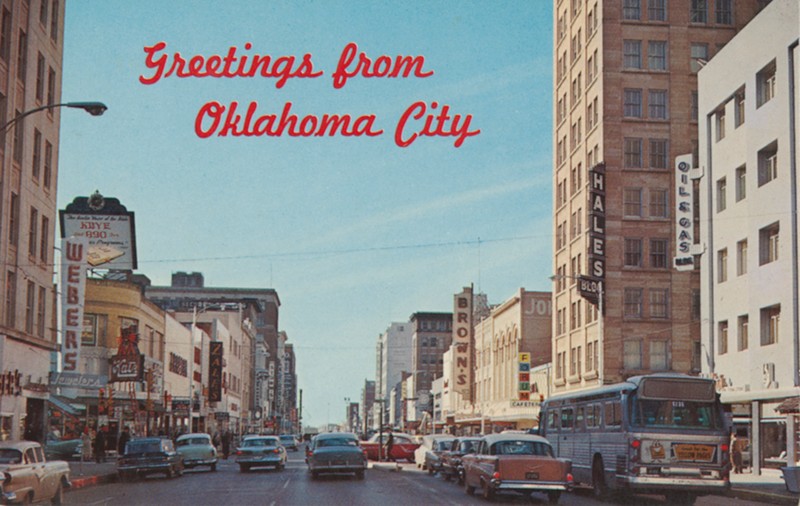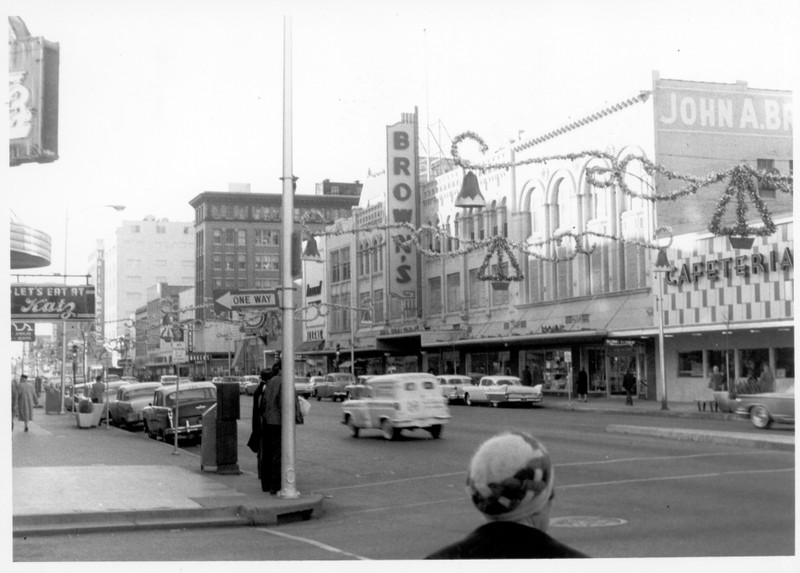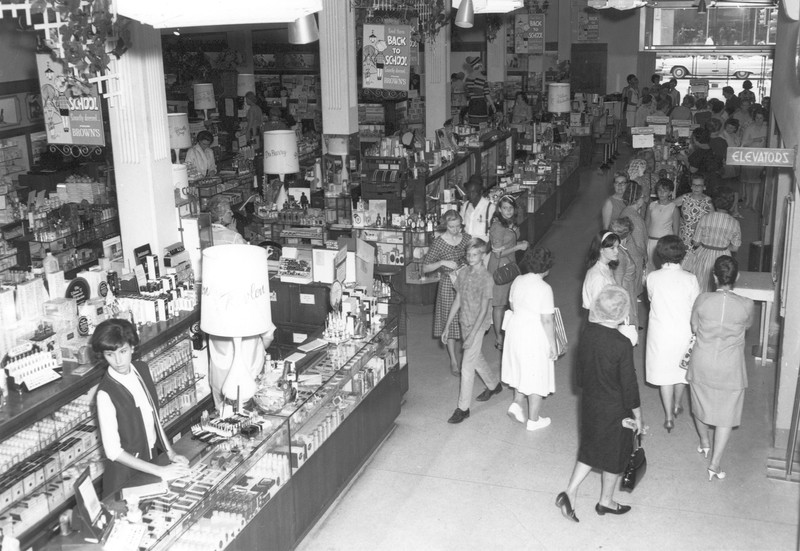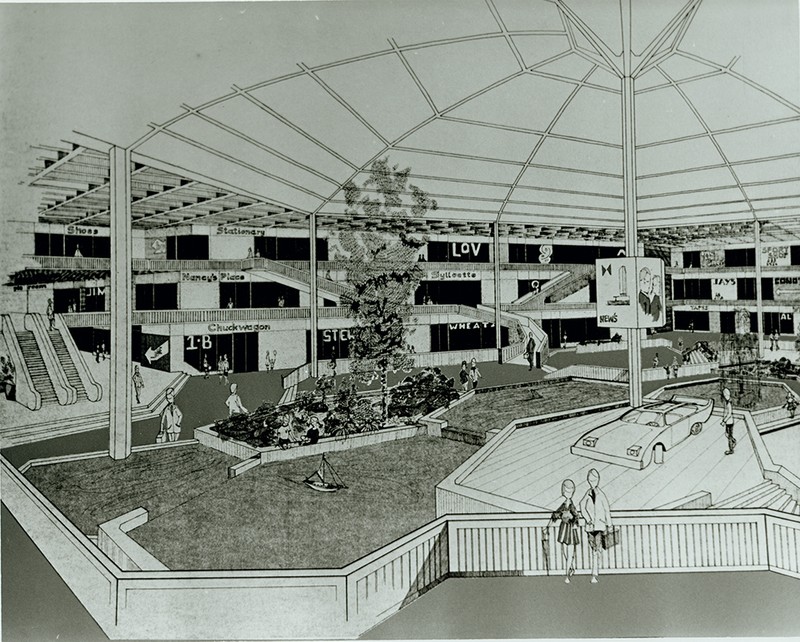Main Street Retail
Introduction
Text-to-speech Audio
Main Street was the retail core of OKC for the first 75 years of its history. The stretch between Robinson and Hudson featured the three major department stores Brown's, Kerr's, Halliburton's and at it's height in the 1950s, an observer quipped that on Main Street, "You can buy anything but a car or a boat."
TOUR GOERS MAY WISH TO REACH STOP #3 BY WALKING EAST FROM HUDSON THROUGH THE DEVON ENERGY GARAGE TO HARVEY IN ORDER TO GET A FEEL FOR WHERE THE RETAIL CORE WAS LOCATED.
Images
Main Street Oklahoma City, c1960

Main Street Oklahoma City Retail in Holiday Season, 1957

John A. Brown Department Store Interior, 209 W Main, 1960

Proposed Downtown Oklahoma City Retail Galleria, 1970

Backstory and Context
Author-Uploaded Audio
Audio commentary provided by legendary Oklahoma City newsman Gan Matthews
Text-to-speech Audio
Main Street was the retail core of OKC for the first 75 years of its history. The stretch between Robinson and Hudson featured the three major department stores Brown's, Kerr's, Halliburton's and at it's height in the 1950s, an observer quipped that on Main Street, "You can buy anything but a car or a boat."
Contrary to popular belief, urban renewal did not kill Main Street retail. The consumer killed Main Street retail by demanding front door parking and locations not too far from her suburban home. In OKC the shift to the suburbs began in 1954 when Sears moved from Downtown to NW 23 and Penn. Other stores either followed Sears or folded. Locally, only John A Brown made a successful transition from Downtown to suburban malls.
What urban renewal did do, however, was cut too deep, demolishing all of the buildings in the retail core and any hope of a return of retail to Downtown with it. The failure was in the execution and not the planning as the Pei Plan included the massive Galleria retail "superblock" from Park to Sheridan and Hudson to Robinson. However, by demolishing all but the Colcord and Cravens Buildings, the patient was killed in order to save him. Retailers tend to flock together and ultimately, no major retailer was willing to commit to the Galleria alone.
Sources
Hill, Gilbert. "Retail Sales Drop Not Limited to Downtown Oklahoma City." Daily Oklahoman (Oklahoma City) April 17th 1966. .13.
Weiss, E. B. . "Downtown Retailing and the Coming Revolution in Transit." Guffey's Executive Journal (Oklahoma City) October 13th 1965. .7.
Hill, Gilbert. "Oklahoma City 'Sick' at Heart, Not Dead." Sunday Oklahoman (Oklahoma City) April 10th 1966. .15.
https://www.metrolibrary.org/archives/image/2019/10/greetings-oklahoma-city
https://www.metrolibrary.org/node/42640
https://www.metrolibrary.org/node/42639
https://www.metrolibrary.org/archives/image/2019/12/interior-view-proposed-galleria-retail-area
